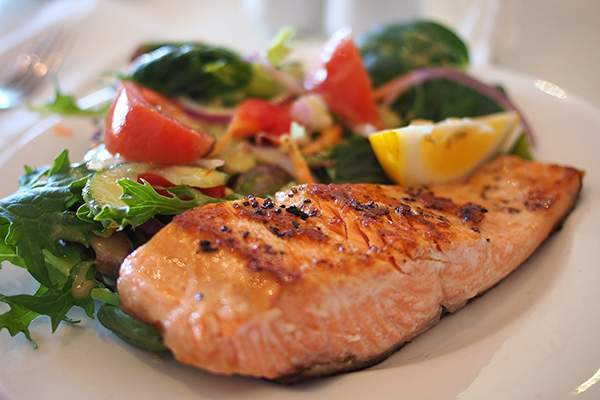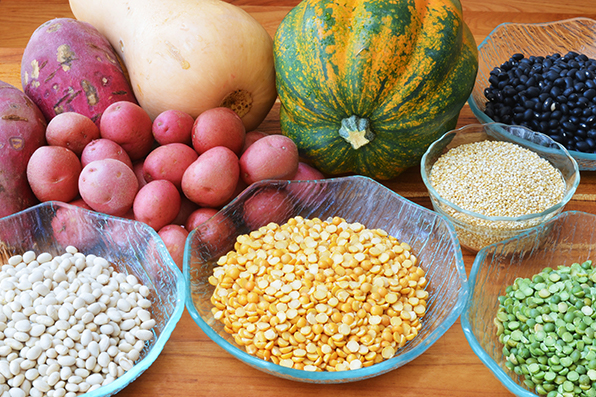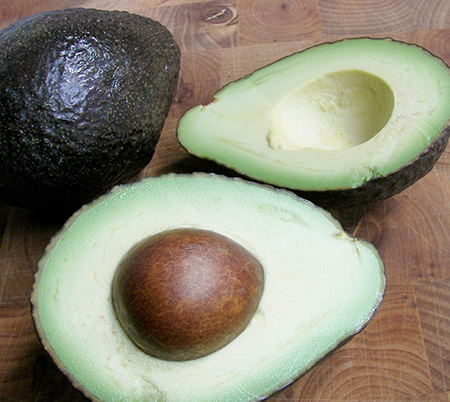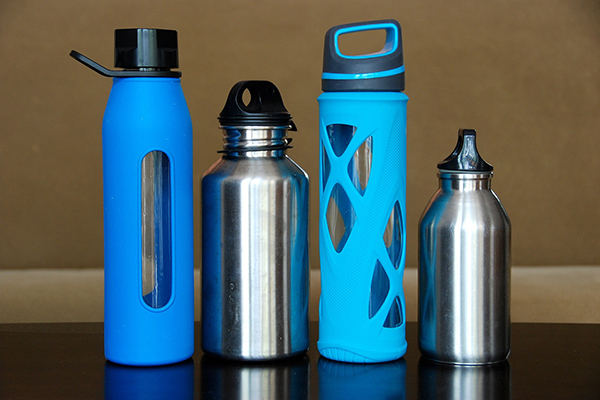The foods that we choose to eat impact every aspect of our health, and as you can imagine, these food choices can also impact every aspect of an athlete’s performance. Choosing the right foods, at the right times, can improve power, strength, reaction time, endurance and recovery.
Our young athletes need to eat well to not only support growth and development but also to support their sports performance goals. To optimize sports performance, you first have to be a healthy human. Starting with nutrition basics is a must.
Basics: 3 meals per day that contain adequate protein, nutrient dense carbs, healthy fats, and vegetables.
Protein
We all know that our muscles are made of protein, but virtually every cell in our body has some protein in it. Protein is needed to build up, keep up and replace tissues in our bodies.
Choose real food sources of protein the majority of the time like chicken, beef, fish, eggs, tempeh, tofu, Greek yogurt, cottage cheese, beans and lentils.
Protein is a very important part of a young athlete’s diet. Needs will vary depending on size and activity level, but in general, it will be between 20-30% of total calories, or 1.2 to 2g of protein per kg body weight. For example, a 100 pound (roughly 45kg) child would need anywhere between 55g and 90g of protein spread throughout the day. Basically, we need to make sure that protein is a part of every meal.
Carbohydrates
Carbohydrates are the main source of fuel for young athletes and are needed to fuel muscles. Of course, quality and quantity matter. You want to get your carbohydrates from nutrient dense real, whole foods like whole grains, fruits, vegetables, beans and lentils because in order for carbs to get transformed into energy, we need the vitamins and minerals that are in real, whole foods.
Our body can store carbohydrates in limited amounts in our muscles and liver. This storage form of carbohydrates is called glycogen. Glycogen stores can get depleted during two to three hours of moderate aerobic exercise, or 15 to 30 minutes of high intensity exercise. When your muscles run low on glycogen during exhaustive exercise, you "hit the wall" and feel overwhelmingly tired, physically and mentally.
You can increase the amount of glycogen your muscles can store with proper training. Glycogen storage is optimized when you eat a carbohydrate-rich diet and allow the muscles time to refuel with carbs after training. The actual amounts will vary depending on the amount of exercise and intensity levels. This is why it’s important to have structured mealtimes, and most likely snacks, around exercise or training time.
Carbohydrate needs vary depending on activity level, but in general, somewhere around 45-65% of total calories should be coming from carbs for young athletes.
Fats
Fat is also an essential component of a healthy diet. It provides sustained energy and is essential for proper cell membrane function and the absorption and utilization of fat-soluble vitamins A, D, E and K.
And, again, we want to get our fats from real food sources, like nuts, seeds, avocados, olive oil or avocado oil. I would also encourage the regular intake of omega-3 rich fatty fish like salmon, sardines, mackerel and herring. Omega-3 fatty acids are essential for brain development, mental health and reducing inflammation.
In general, fats will comprise about 25 to 35% of total calories, with small amounts at each meal.
Vegetables and Color
If you have an athlete that wants to win and improve their sports performance, they need to be eating fruits and vegetables. Yes, the macros are important, but the micronutrients are also extremely important. Part of this just goes back to being a healthy human.
Fruits and veggies are loaded with vitamins, minerals and phytonutrients. Phytonutrients are the compounds that give plant foods their color. They also have many very important functions in our body, such as being powerful antioxidants and helping to reduce inflammation – two things that are crucial for an athlete.
First, encourage fruits and veggies at each meal or snack. If that’s already a standard, then start working on variety.
Before, During and After
Making sure there is “gas in the tank” is essential for optimal sports performance, whether it is a high intensity training session, game or event.
The “before” is really everything you’ve eaten that day, from breakfast up to game time. Keeping the basics in mind, here are some guidelines (basically, the closer it gets to the event, the less you eat).
- 3-4 hours prior to the event: Eat a full meal, complete with protein, nutrient dense carbs and a little healthy fat (if possible). Also make sure there is color on the plate from fruits and veggies.
- 1 ½ to 2 ½ hours prior to the event: If you aren’t able to eat a meal 3-4 hours ahead, then have a “fueling snack” – basically a smaller version of a meal. Again, protein, carbs, small amounts of fat and fruits and veggies.
- 30 to 60 minutes prior to the event: If the event or training is especially high intensity, eat something with about 30g of carbs to top off those glycogen stores. The goal is to be fueled and energized, not stuffed.
During the event,
- Sip on water around every 20 minutes, if you can. This is to ensure you remain hydrated.
- Depending on intensity level and duration of event, add carbs. For most, an electrolyte drink with carbohydrates is the easiest way to do this. If you can tolerate food, then fruit that is high in water content can also work, like oranges, tangerines or grapes.
- If the event lasts longer than an hour and is moderate to high intensity, then having around 30g of carbohydrates every hour can help keep energy levels up.
- If it is very high intensity, up to 60g of carbs per hour may be necessary.
Eating after the event is necessary to help you recover, rehydrate, refuel, build muscle and improve future performance. The easiest way to do this is to have a full meal as soon as you can, preferably within 2 hours. If that is not possible, then have a protein and carbohydrate rich snack.
Fueling your body is important for optimal performance, but many young athletes are not getting proper nutrition. Learn how to fuel to optimize performance! #saslife #sportsnutrition Click To TweetHydration
One of the most important tools in your arsenal is hydration. When you do not consume enough fluids, your muscles will fatigue much quicker, your coordination will decrease, and you will be more likely to develop muscle cramps. Plus, your body will not be able to regulate its core temperature, leading to overheating and exhaustion.
Hydration needs vary depending on the person, the activity, the intensity, how hot it is, etc., but in general, get a minimum of ½ your body weight in ounces – so 50oz for 100lbs.
In addition to this, athletes will need roughly 20oz per hour of training (again depending on size).
And don’t forget, if an event lasts longer than an hour and is moderate to high intensity, or if it’s really hot outside, then electrolytes will likely also be needed.
Key Points
What and when you eat can make a big difference to sports performance and recovery. Well-balanced meals and adequate fluid intake are important for energy production, recovery, prevention of injuries and proper growth.
Both meal composition and meal timing must be individualized for each person based on gender, age, body type and type, intensity, duration and frequency of activity. Consuming meals that are balanced in macronutrients and composed of real, whole foods is a great place to start.
Sheet Pan Ranch Chicken and Broccoli
Recipe adapted from Raising Generation Nourished
Servings 4
PRINT RECIPE
Ingredients
Ranch Seasoning Mix
2 Tbsp dried parsley
1 ½ Tbsp sea salt
2 Tbsp garlic powder
2 Tbsp onion powder
1 Tbsp dried basil
1 tsp sugar (optional)
2 tsp dried thyme
2 tsp black pepper
Roasted Ranch Potatoes
2 Tbsp olive oil
8-10 small to medium yellow potatoes, cut into 1-inch cubes
1 Tbsp ranch seasoning mix
1 tsp nutritional yeast (or grated parmesan if you can have dairy)
Crispy Ranch Chicken & Broccoli
½ cup gluten-free panko breadcrumbs
¼ cup nutritional yeast (or grated parmesan if you can have dairy)
¼ cup blanched almond flour or more panko breadcrumbs
3 Tbsp ranch seasoning mix
2-3 Tbsp mayo or olive oil
4 boneless chicken breasts
1-2 heads broccoli, cut into florets
2 Tbsp olive oil for the broccoli
Sea salt and pepper, to taste for the broccoli
Instructions
For the ranch seasoning
- Whisk everything together in a jar or container that has a lid. Store at room temp in an airtight container.
For the potatoes
- Pre-heat the oven to 425ºF and put 2 large sheet pans in the oven. This will pre-heat the pans and make for crispier potatoes and better cooking on the chicken.
- In a medium mixing bowl, toss all of the roasted ranch potatoes ingredients until combined.
- Once the oven is pre-heated, take one of the sheet pans out of the oven, and spread the seasoned potatoes out onto the hot sheet pan.
- Roast the potatoes for 15 minutes while you prep the chicken and broccoli.
For the chicken and broccoli
- In a shallow dish, whisk breadcrumbs, nutritional yeast, almond flour and ranch seasoning.
- Pound the tops of the chicken breasts to match the thickness of the bottoms, about an inch.
- Coat the chicken breasts on both sides with mayo or olive oil. I use my hands, but you could use a brush if you want.
- Wash your hands, then use tongs to dip each mayo coated chicken breast into the ranch seasoned breadcrumbs, flipping the chicken breasts so they are covered on both sides.
- In the same mixing bowl that you tossed the seasoned potatoes, toss the broccoli with olive oil, salt and pepper. You could potentially ranch season these too if you want!
- Take the empty hot sheet pan from the oven and put the seasoned chicken and broccoli on this pan.
- Once the potatoes have finished the first 15 minutes of roasting, remove the pan, stir the potatoes around, and put them back in the oven along with the sheet pan with chicken and broccoli.
- Cook both sheet pans for 15 minutes then remove from oven. You can place the chicken under the broiler at the end for color if you want. The chicken should have an internal temperature of 165ºF.








